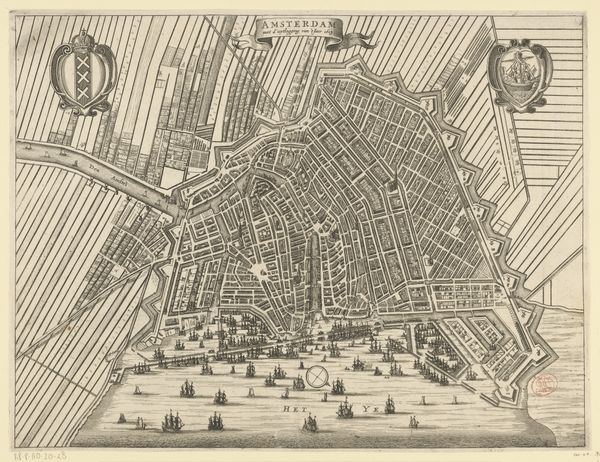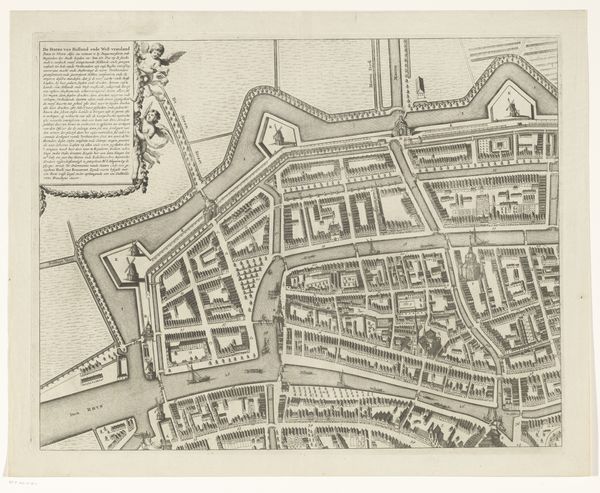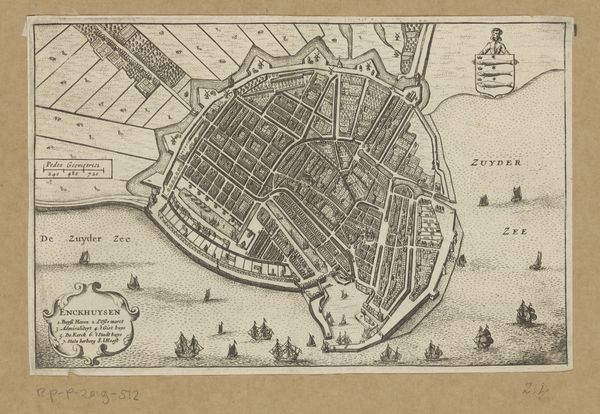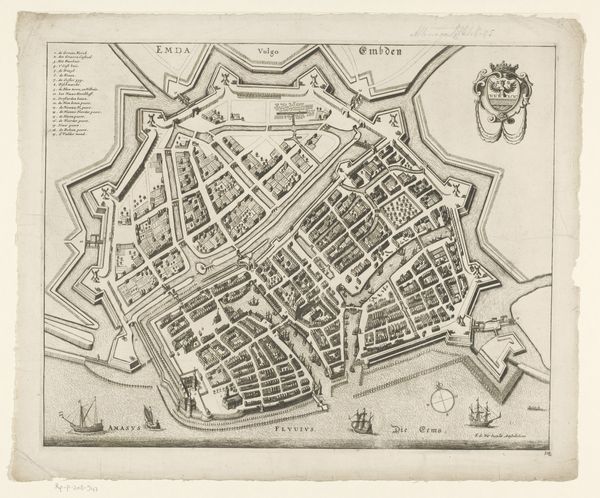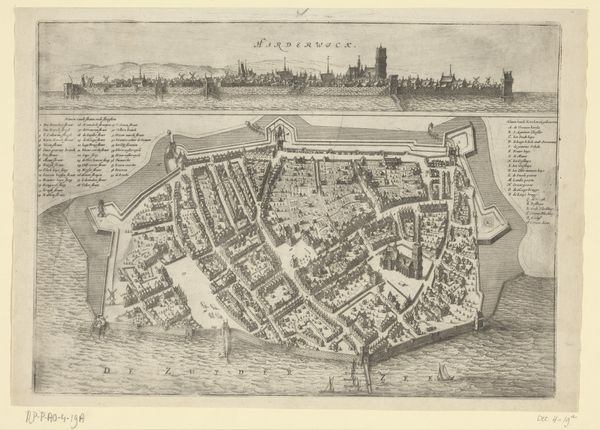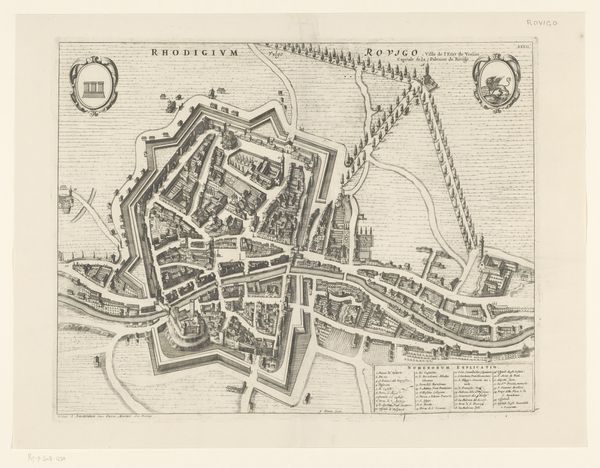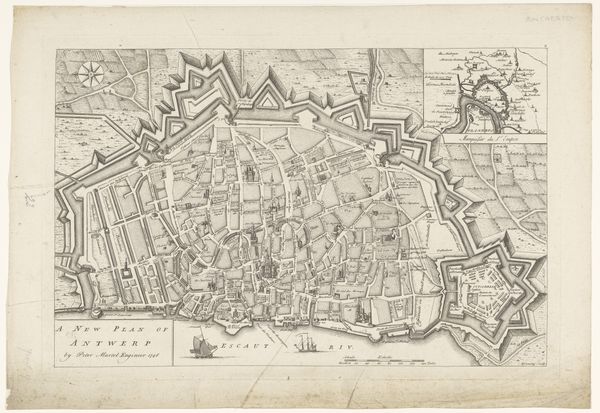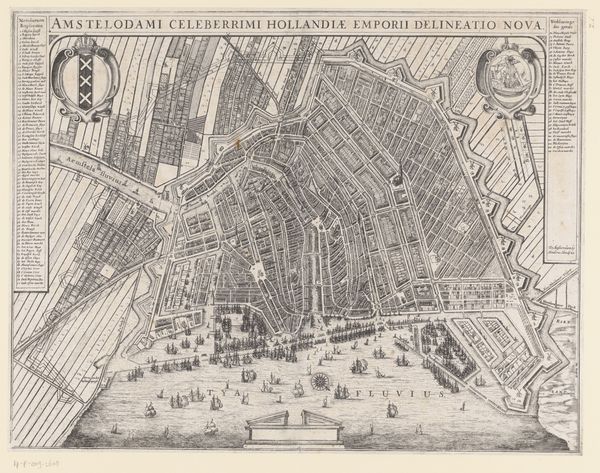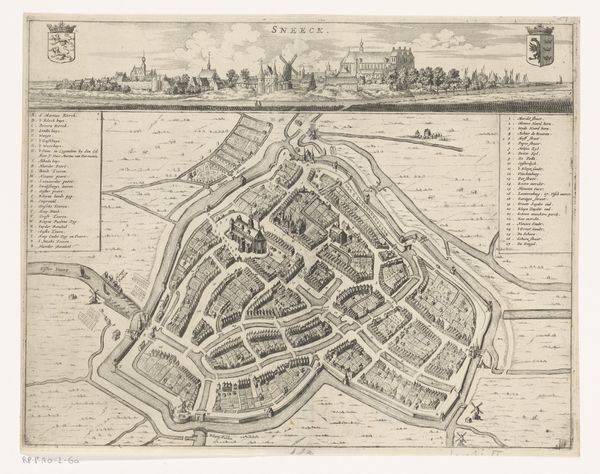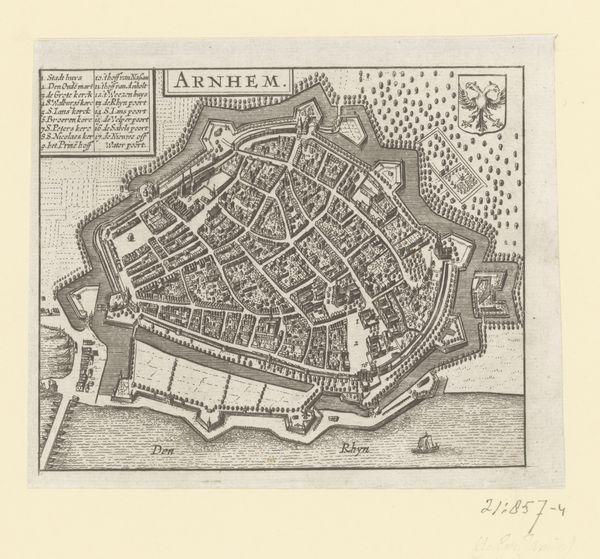
print, engraving
#
baroque
# print
#
cityscape
#
history-painting
#
engraving
Dimensions: height 390 mm, width 510 mm
Copyright: Rijks Museum: Open Domain
This plan of Rome was made by Giovanni Battista Falda in the late 17th century, using the intaglio printmaking process. An engraver would have used a tool called a burin to cut lines into a copper plate, which was then inked and pressed onto paper. Take a close look: The dense network of lines creates a detailed image of the city, and the subtle variations in their depth and thickness give a sense of depth and texture. Falda would have needed exceptional skill and a steady hand to carve such a complex design. The amount of work involved speaks to the value placed on accurate representation and the dissemination of knowledge in this period. Printmaking allowed for the mass production of images, making them accessible to a wider audience. This had a major impact on the circulation of ideas and the shaping of public opinion. Plattegrond van de stad Rome provides insight into the relationship between art, labor, and the burgeoning print culture of the early modern period.
Comments
No comments
Be the first to comment and join the conversation on the ultimate creative platform.

